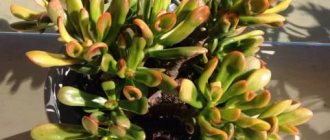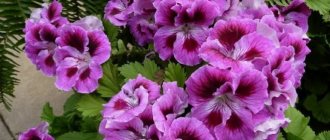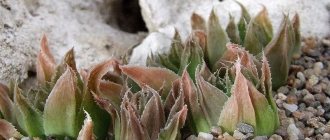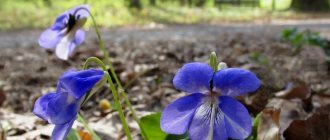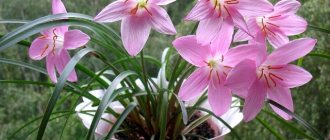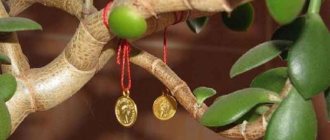The indoor flower Lantana is very common these days. It is actively grown in the garden, in tubs, and in apartments.
Author of the article
Anna Dmitrieva
Gardener with 15 years of experience.
Description of the bush
- The flowers of the plant converge into rounded corymbose-shaped inflorescences. The main advantage is the very long and abundant flowering process.
- At the same time, growing lantana is not difficult, the plant is unpretentious and has a compact shape. It is one of the 10 best crops for tub cultivation in the south of our country.
- Despite the advantages, there are nuances that definitely need to be paid attention to. Hybrid lantana represents selection forms. Such species are the most common in the gardening community. They have good decorative properties.
Species cultivation
Lantana camara flower
It is an evergreen shrub plant. The length and width of this specimen range from 1 to 2 meters. At home, such lantana creates small compact variations up to half a meter in height.
Stems are straight and branched, tetrahedral. Sometimes they have spines on their body. The leaves have an oval oblong shape. The surface is embossed and wrinkled. The length does not exceed 10 centimeters. They have the aroma of warm grass.
The flowers are small. They are collected in inflorescences about 5 cm in size. The process occurs from late spring to mid-autumn.
Interesting blue-black fruits and berries with a bluish bloom ripen.
French breeders have done a good job of developing beautiful varieties. They were able to move away from the original multi-colored varieties and create monochromatic varieties. The palette has become brighter and more varied.
Samantha and White Drift
Thus, lovers of monotonous flowering actively use the varieties “Samantha” and “White Dwarf” in their cultivation. The first has a bright yellow color, the second is white.
Aloha
In container growing, the “Aloha” variety has become one of the most popular. It has descending soft shoots. The leaves are bright and the flowers are pale yellow.
Goldsonne
The “Goldsonne” variety has proven itself in the field of hanging cultivation. It has bright yellow flowers and spreading shoots.
Sterile varieties of the plant have also been developed. They bloom beautifully and abundantly, but fruit set does not occur. These include the following: “New Gold” (it has bright yellow flowers), “Miss Huff” (coral, yellow and orange inflorescences), “Silver Mound” (cream with a yellowish center). These species perfectly decorate the garden plot in the summer.
Varieties of dwarf sizes are in particular demand.
Possible difficulties
Although the Lantana flower is not very difficult to grow and care for at home, difficulties nevertheless arise. Let's try to tell you what you might encounter and how to avoid problems.
The Lantana plant can be damaged by a number of insects. These are pests known to all gardeners: spider mites, aphids, mealybugs and whiteflies. If a plant is damaged by pests, it requires treatment with an insecticide.
A lack of sunlight leads to shrinkage of leaves and elongation of branches. In combination with a warm winter, the lack of sufficient sunlight can lead to a lack of flowering. If Lantana lacks moisture, the tips of its leaves begin to dry and the tops of the shoots begin to curl.
Feeding the flower too infrequently has a negative effect on the color intensity of the leaves - the vegetative organs turn pale. At low air temperatures, flowers fall off. At the same time, partial leaf fall in winter is a completely natural phenomenon, so don’t be alarmed.
Note!
Lantana flower is a poisonous plant. Therefore, all work performed with the plant must be carried out only with rubber gloves. In addition, the pot with the culture should be kept out of the reach of pets and small children.
In general, the South African plant is quite unpretentious. If you follow our tips for caring for Lantana at home, you are unlikely to have any serious problems maintaining it. Good luck, comfort and good mood!
Article protected by copyright and related rights. When using or reprinting material, an active link to the women's website www.inmoment.ru is required!
Tags: lantana flower
Lantana: care and cultivation features
The nuances of keeping the plant depend on the method used: in an apartment, in a country house or in a tub culture.
Ground and location
For an apartment flower, the soil should consist of equal parts of turf soil, sand and humus. The plant loves active watering during the period of active growth. But it is important to avoid excess moisture, as it is no less destructive than drought.
It is best to place it on windows facing southeast and southwest. In summer, the light should be diffused. But the sun is a prerequisite for flowering.
Humidity and temperature
High humidity combined with high air temperature is detrimental to the flower. To achieve good branching, a lush crown, and the tips of the shoots should be pinched regularly. Lantana survives pruning well. Therefore, tall shoots must be shortened in time.
Once every 15 days it is necessary to provide complementary feeding with nutritious mineral preparations.
How to care:
- If the pot becomes small, then you should transplant it using the transfer method into a larger container. The month of July is best suited for these purposes. Replanting will ensure better flowering.
- In winter there comes a time of rest, which is important to organize correctly. Lantana should be placed in a bright room with a temperature of 12-14 degrees.
- Watering becomes less frequent. But it is strictly forbidden to overdry the soil. If the foliage has completely fallen, then the temperature should be maintained at about 6-8 degrees Celsius.
- In the spring, weak shoots are pruned and pinched to form a lantanta shape. Propagation by cuttings can be done just from the resulting branches.
Pests
When a whitefly pest appears on a flower, you need to wipe all the leaves on both sides with a damp cloth every day for 14 days. If there are a lot of insects, then the plant is sprayed with a preparation against cockroaches and placed in a bag that is tied.
The flower moves for a day to an open balcony or loggia in partial shade. Then, it is rinsed under a fresh shower.
Spraying
It is also advisable to periodically spray with water from a spray bottle. Although lantana tolerates dry conditions well, lack of moisture can cause spider mites or scale insects.
Water should be used soft, at room temperature. It is advisable that it does not fall on the inflorescences to prevent the formation of fungi.
Previously, we told you how to care for blechnum fern.
Contents using the tub method
Care is carried out similarly to indoor culture. The only difference is that the container with lantana gradually begins to be hardened and taken outside in the spring. But these actions should be carried out only when there is no longer any risk of frost.
Before the autumn cold snap, the flower is cut short and placed in a cool greenhouse with a temperature of about 7-9 degrees Celsius. Watering is rare.
Diseases
If the lantana in the tub is attacked by a whitefly, the plant is treated with Fitoverm according to the instructions. Particular attention should be paid to the inside of the leaves. Be sure to perform the procedure away from other plants, for example, in the backyard.
Mr. Summer resident recommends: transplant
The lantana root system develops quite quickly and requires regular replanting. Young plants - once a year, older ones - once every 2-3 years. The pot for transplanting is chosen to be roomy, wide, and deep. The bottom is covered with permeable drainage (expanded clay, pebbles).
When replanting, the roots of the flower are cleaned of old soil to obtain useful nutrients from the new one. For the substrate, mix in a ratio of 1:1:3:4: humus, sand, turf, leaf soil.
Kamara (vaulted)
Growing in open ground
Keeping lantana in the garden in open ground is permissible in southern lands.
The care process should consist of the following procedures:
- In spring, the soil is dug up and loosened;
- Regular watering is organized;
- The earth is mulched with a natural substrate;
- In mid-spring, early summer and autumn, fertilizing is carried out;
- During growth, pruning and pinching are performed to form the required contour;
- After autumn frosts, pruning is carried out to create a “short stump”;
- For winter, cover with a small layer of mulch.
Flower propagation
You can grow lantana from seeds. They are pre-soaked in water at room temperature. After soaking for 24 hours, they are planted in a container. You need to wait for the emergence of seedlings from one to three months. In this case, it is necessary to maintain a temperature of 9-25 degrees Celsius.
Reproduction at home, which is possible using cuttings, easily takes root. Reception of shoots is carried out in March or summer. The apical branches are most suitable. Their trunk should be half woody. Length about 10 centimeters.
For planting, loose, moist soil made of sand and peat in equal proportions is suitable. The temperature should be maintained at around 20 degrees Celsius. The approximate rooting period is 3 weeks.
Interesting Facts
- The leaves of the flower have an ambiguous aroma. Some people find it very unpleasant, reminiscent of the smell of cat urine. And some people fill pillows with them and use them as flavoring agents.
- The flowering of one bud lasts no more than three days.
- Unripe fruits are very toxic and dangerous for animals and humans.
- During the process, the color of the rubble changes from white to orange or red.
- Used for medicinal purposes. Helps with dermatitis, wounds and bites. For rheumatism and colds, a decoction of lantana is used.
- In Australia it is considered one of the most formidable and difficult to remove weeds.
- In open ground in southern territories it manifests itself very aggressively, displacing other plants. In India they even call it the “curse of the planters.”
- The plant is very beautiful and quite unpretentious. Achieving optimal conditions is not difficult. And abundant flowering will always please.
Varieties
The following types of lantana exist:
- Spiny, otherwise known as vaulted (Lantana camara). It is an erect shrub whose height can reach one and a half meters. The stems are covered with thorns, which is where the name of the plant comes from. During the flowering period, the bush is covered with yellow or pink inflorescences. Subsequently, the color changes to scarlet and peach, respectively. The diameter of the flowers reaches 5 cm.
- Sello (Selloviana). The plants are characterized by thin and flexible stems. The bush produces small flowers with a bright yellow base and mauve tips. Their size is about 5 mm. The leaves of this lantana are dark green and pubescent on the underside.
- Montevidensis (Montevidensis). This variety is distinguished by climbing shoots strewn with small leaves. The color of the inflorescences is lavender or purple. Their diameter does not exceed 3 cm.
- Wrinkled (Rugulosa). The name of the plant comes from its wrinkled and rough leaves. A mature shrub can reach a height of a meter. It is distinguished by straight shoots in small thorns. The flowers have a light purple color.
- Sage leaf (Salviifolia). The height of such a plant can be up to 2 meters. Its stems branch intensively. The veins are clearly visible on the dark green leaves. The color of the buds can be soft pink or light purple.
- Blood red (Sanguinea). This variety is characterized by monochromatic orange-red inflorescences. The size of the bush reaches one and a half meters. The branches are covered with large oval-shaped leaves.
- Hybrid. This type of lantana can grow up to 80 cm. It has wrinkled leaves and flowers of a lemon-yellow hue, which later turns red-orange.
Hybrid plant varieties are used for decorative purposes. Many of them were bred from the spiny lantana (camara).
The most popular lantana varieties in the photo:
- White Dwarf. A special feature of this variety is its white flowers.
- Tutti Frutti. The inflorescences of such lantana are first yellow, then orange, and then purple.
- Esperanta Pink. The shrub is characterized by pink-purple flowers.
- Bandana Pink. The color of the petals of this variety is pink or crimson.
- Kamara Lyubava. Quite a tall shrub (up to 150 cm) with pubescent tetrahedral stems and gray-green foliage. Inflorescences range from orange to reddish.
Almost all hybrid varieties are characterized by slow growth rates and compact sizes. The height of mature plants varies from 50 to 80 cm.
